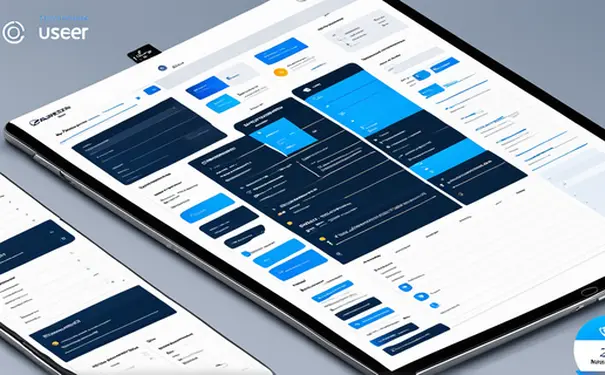The editor of Downcodes will take you to understand the mainstream open source streaming media servers! This article will deeply explore the five open source streaming media servers of NGINX RTMP module, Red5, MediaSoup, OvenMediaEngine and CasperCG, analyze their functional characteristics, application scenarios and advantages and disadvantages, and help you choose the server that best suits your needs. From the high-performance NGINX RTMP module to the OvenMediaEngine focusing on low latency, to CasperCG suitable for professional TV broadcasting, we will analyze them one by one to provide a reference for your streaming project.

Mainstream open source streaming media servers include: NGINX RTMP module, Red5, MediaSoup, OvenMediaEngine and CasperCG. These servers have a high status in the open source community. They provide the basic functions required for streaming media and can be customized to meet specific business needs.
Among them, the NGINX RTMP module is particularly prominent among open source streaming servers. It is based on NGINX, a high-performance HTTP and reverse proxy server. Extended by the RTMP module, it supports the live streaming function of the Real-time Messaging Protocol (RTMP). The NGINX RTMP module supports various features such as live broadcast, recording, HLS, etc., and its high performance and high stability make it very popular in the industry.
The NGINX RTMP module is an open source streaming extension designed specifically for NGINX servers. It provides support for real-time video and audio streaming, allowing you to build an efficient and easily scalable live broadcast system.
The NGINX RTMP module supports multiple streaming media protocols, including RTMP, HLS and MPEG-DASH, and can publish, play and record streaming media. It provides rich configuration options and a low-latency live broadcast experience.
Because of its excellent performance and flexibility, many live broadcast platforms and video services choose NGINX RTMP module as their streaming server. At the same time, it is also ideal for small to medium-sized streaming projects.
Red5 is another popular open source streaming server commonly used for live video streaming and real-time communication.
Red5 supports RTMP, RTMPT, RTMPS and other streaming media playback protocols. In addition, it also allows multi-mode streaming media recording functions, including video conferencing, real-time streaming media broadcasting and other functions.
Red5 is suitable for applications that require advanced streaming media processing functions, such as video chat, multi-person video conferencing, etc. It can handle scenarios where multiple users access it at the same time, and can meet the needs of live broadcast applications deployed within enterprises or that have high latency requirements.
MediaSoup is an excellent modern WebRTC streaming server that supports a variety of advanced streaming technologies.
It is based on the WebRTC standard, supports ultra-low latency video streaming, and is suitable for application scenarios that require fast response. MediaSoup has advanced audio and video routing capabilities and supports large-scale multimedia distributed transmission.
It is very suitable for applications that require high-quality, low-latency audio and video communication, such as online education, telemedicine and video conferencing systems and other high-standard demand scenarios.
OvenMediaEngine is an open source streaming media server featuring low-latency live broadcast.
It supports protocols such as WebRTC and low-latency streaming (LL-DASH). OvenMediaEngine focuses on achieving sub-second streaming media latency, which is suitable for live broadcast applications that require real-time interaction.
This server is often used in e-sports, online auctions, real-time monitoring and interactive live broadcasts, etc., and can provide users with a near-real-time interactive experience.
CasperCG is an open source video and graphics playout server designed specifically for television broadcasts.
It supports high-definition video playback, graphics and video synthesis, real-time image processing and other functions. CasperCG is widely used in television stations and professional live broadcast situations.
It can be used to create TV-level live graphics overlays and video broadcast management, and is suitable for use in professional media industries such as live TV and large-scale live event displays.
1. What is an open source streaming server? Open source streaming media server refers to server software developed based on open source code for the transmission and distribution of streaming media content. It allows users to transmit audio, video and other multimedia content in real time over the network, and is typically used in application scenarios such as live video, video on demand and real-time audio streaming.
2. What are the mainstream options for open source streaming media servers?
Nginx-RTMP: This is a streaming media server module based on Nginx that supports real-time video broadcast and on-demand. FFmpeg: This is a complete, cross-platform solution that can be used both as a streaming server and for transcoding, encoding, and decoding. VLC Media Server: VLC is a powerful media player that can also be used as a streaming server to distribute content. Red5: This is a streaming media server written in Java that supports real-time audio, video and data transmission. Wowza Streaming Engine: Wowza is a commercial streaming server software, but it also has some open source versions available.3. How to choose an open source streaming media server that suits you? If you are a beginner or need to quickly set up a simple streaming media server, Nginx-RTMP and VLC Media Server are good choices. They are easy to configure and use. If you need powerful functionality and more advanced features, FFmpeg and Red5 may be more suitable choices for you. If you have the budget and need more advanced features and performance, consider commercial streaming server software such as Wowza Streaming Engine. Choosing the server that's right for you should take your needs, skill level, and budget into consideration. In addition, attention should be paid to the scalability and stability of the server to ensure that it can handle future traffic growth and demand changes.
I hope the above information can help you better understand and choose open source streaming servers. Choosing the right server depends on your specific needs and technical capabilities. Please choose based on the actual situation. The editor at Downcodes wishes you success with your project!